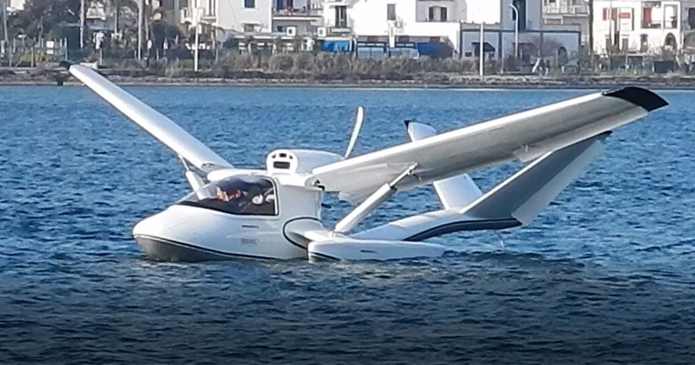Aeronautics
The SERENA project aims to develop a prototype propulsion system for a General Aviation- category aircraft based on hybrid power technologies (hydrogen-fueled cells, batteries, and super-capacitors).
SERENA contributes to the subject of fuel cells for Advanced Air Mobility (AAM) applications to allow air transportation with zero emissions by small and medium-sized air taxis and unmanned aircraft. SERENA will also investigate emerging storage and energy-recovery technologies for energy reuse during flight and take-off, landing, and taxiing. The propulsion system will have a 90% lower climate impact than conventional systems.
SERENA will expand the experimental practices for new-generation aircraft at the Grottaglie Airport Test Bed, a strategic infrastructure in Southern Italy. The main innovations and benefits include: the generation of specific knowledge in the strategic high-tech sector of the hydrogen supply chain; an increase in investment; and the creation of highly qualified professionals.
ES is contributing numerical simulation to certify the energy storage and distribution system; is developing and verifying a digital twin of the propulsion system; and is developing a decision support system (DSS).
Distretto tecnologico aerospaziale | Enginsoft Spa | Novotech Srl | Università del Salento – Department of Innovation Engineering
Funded by the European Union - NextGenerationEU - Italian National Recovery and Resilience Plan (NRRP) - M2C2.3.5

by Marco Corti | EnginSoft
Leonardo Lecce | Novotech
Futurities - Spring 2025
The aviation industry's pursuit of sustainability is accelerating the exploration of hydrogen fuel cells as a zero-emission propulsion solution. The SERENA project—driven by DTA, EnginSoft, Novotech, and UniSalento—focuses on integrating hydrogen fuel cells and batteries into general aviation, specifically for the Seagull light aircraft. A key challenge lies in safely managing hydrogen’s high flammability. To address this, the project used CFD simulations to assess the effects of a potential gas leak inside the aircraft cabin. Initial tests with natural ventilation revealed significant combustion risks within seconds. However, by implementing forced ventilation, optimizing airflow geometry, and using fast-response sensors, the team reduced hydrogen concentration to safe levels (<1%) even under continuous leak scenarios. These findings are a critical step toward enabling safe hydrogen-powered flight.
Read the article
Some of our competences in research and technology transfer

Research project
The SERENA project aims to develop a prototype propulsion system for a General Aviation-category aircraft based on hybrid power technologies (hydrogen-fueled cells, batteries, and super-capacitors).

Research project
The RPASinAir project has the strategic objective of developing the use of Remotely Piloted Aircraft Systems (RPAS) and innovative sensors connected to airborne, satellite or public archive systems, which are capable of reporting critical events and of helping to prevent and manage emergencies (floods, landslides, earthquakes, industrial accidents).

Research project
The initiative is set to transform the European remanufacturing industry by addressing its current limitations and setting new standards for human-centric innovation. It aims to develop and demonstrate a novel remanufacturing paradigm which is inherently safe for humans, target-driven in regeneration and certification, flexible in handling post-use parts variability, and robust for replication in new circular business cases. To achieve these objectives, rEUman partners will develop cutting-edge remanufacturing approaches and integrate them into the value chains.